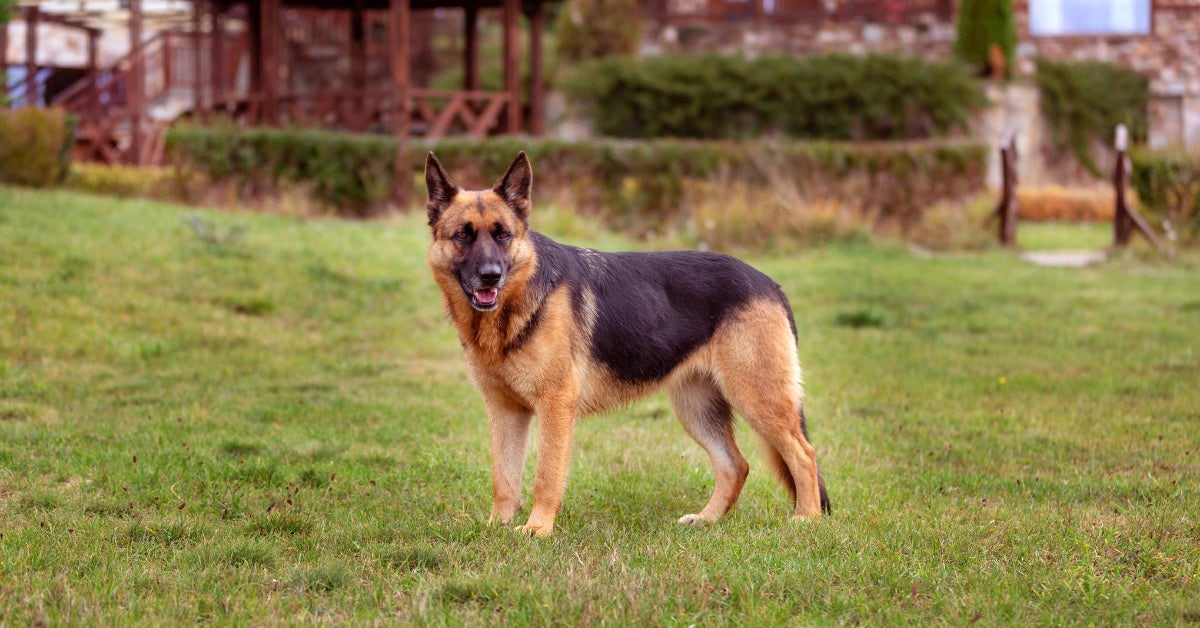Hip dysplasia is a common concern among German Shepherd owners, impacting the health and happiness of these beloved pets. In this article, we delve into the intricacies of German Shepherd hip dysplasia, exploring its causes, symptoms, diagnosis, treatment options, and ways to support your furry friend through this condition.

Understanding Hip Dysplasia in German Shepherd
What is Hip Dysplasia?
Hip dysplasia is a genetic condition where the hip joint doesn’t fit snugly into the hip socket, causing discomfort and eventually leading to arthritis.
Causes of German Shepherd Hip Dysplasia
Genetics play a significant role, but environmental factors such as diet and exercise also contribute to the development of hip dysplasia in German Shepherds.
Identifying Symptoms
Early Signs
Watch out for subtle signs like hind limb lameness, reluctance to climb stairs, or difficulty rising.
Progression of Symptoms
As hip dysplasia advances, symptoms may escalate to constant pain, decreased activity, and noticeable changes in gait.
Diagnosing German Shepherd Hip Dysplasia
Veterinary Examination
Consulting with a veterinarian is crucial for a thorough examination, including observing the dog’s gait and mobility.
Diagnostic Tests
X-rays and other imaging tests provide a detailed view of the hip joint, aiding in accurate diagnosis.
Preventive Measures
Proper Nutrition
Balanced diets with joint-friendly supplements can support healthy hip development in growing German Shepherds.
Regular Exercise
Moderate, low-impact exercises help maintain muscle strength and joint flexibility, reducing the risk of hip dysplasia.
Treatment Options
Medications
Pain management and anti-inflammatory medications can alleviate discomfort associated with hip dysplasia.
Surgical Interventions
In severe cases, surgical procedures like hip replacement may be recommended to enhance mobility and reduce pain.

Living with a German Shepherd with Hip Dysplasia
Lifestyle Adjustments
Simple modifications at home, such as providing ramps and comfortable bedding, can significantly improve your dog’s quality of life.
Supportive Measures
Physical therapy and hydrotherapy can aid in maintaining muscle strength and joint mobility.
Tips for Responsible Breeding
Breeding Considerations
Breeders should prioritize hip health in their breeding programs, considering the genetic history of both parents.
Genetic Screening
Regular screenings help identify potential carriers of the hip dysplasia gene, preventing its spread.
Emotional Impact on Owners
Coping Strategies
Owners often experience emotional distress. Seeking emotional support and joining online communities can provide comfort.
Support Networks
Connecting with other owners facing similar challenges can offer valuable insights and encouragement.
Success Stories
Overcoming Challenges
Numerous German Shepherds lead fulfilling lives despite hip dysplasia, showcasing the resilience of these remarkable dogs.
Thriving with Hip Dysplasia
With proper care, some dogs not only manage their condition but thrive, inspiring others with their resilience.
Common Myths Debunked
Misconceptions about Hip Dysplasia
Dispelling myths surrounding hip dysplasia, such as it only affects older dogs or certain breeds.
Clarifying Facts
Separating fact from fiction, we highlight the true nature of hip dysplasia to better inform dog owners.
Future Research and Innovations
Advancements in Treatment
Ongoing research aims to discover new treatment modalities and improve existing ones for enhanced outcomes.
Holistic Approaches
Exploring holistic approaches, including alternative therapies and holistic nutrition, as complementary strategies.
Conclusion
In conclusion, German Shepherd hip dysplasia is a challenging condition, but with proactive care, it can be managed effectively. By understanding the causes, symptoms, and treatment options, you can provide your furry friend with the best possible care, ensuring a happy and fulfilling life despite the challenges.
FAQs
- Can hip dysplasia be completely cured? No, hip dysplasia is a chronic condition, but with proper management, dogs can lead comfortable lives.
- Is surgery the only option for severe cases? Surgery is an option, but less invasive treatments may also be effective, depending on the individual case.
- Can hip dysplasia be prevented entirely? While it can’t be completely prevented, responsible breeding and proactive care can significantly reduce the risk.
- Is hip dysplasia exclusive to German Shepherds? No, it can affect various dog breeds, but certain breeds, including German Shepherds, are more prone.
- How often should a dog with hip dysplasia exercise? Regular, low-impact exercises are beneficial, but consult with a veterinarian for a tailored exercise plan.

1 thought on “German Shepherd Hip Dysplasia: Navigating Challenges and Ensuring Well-being”